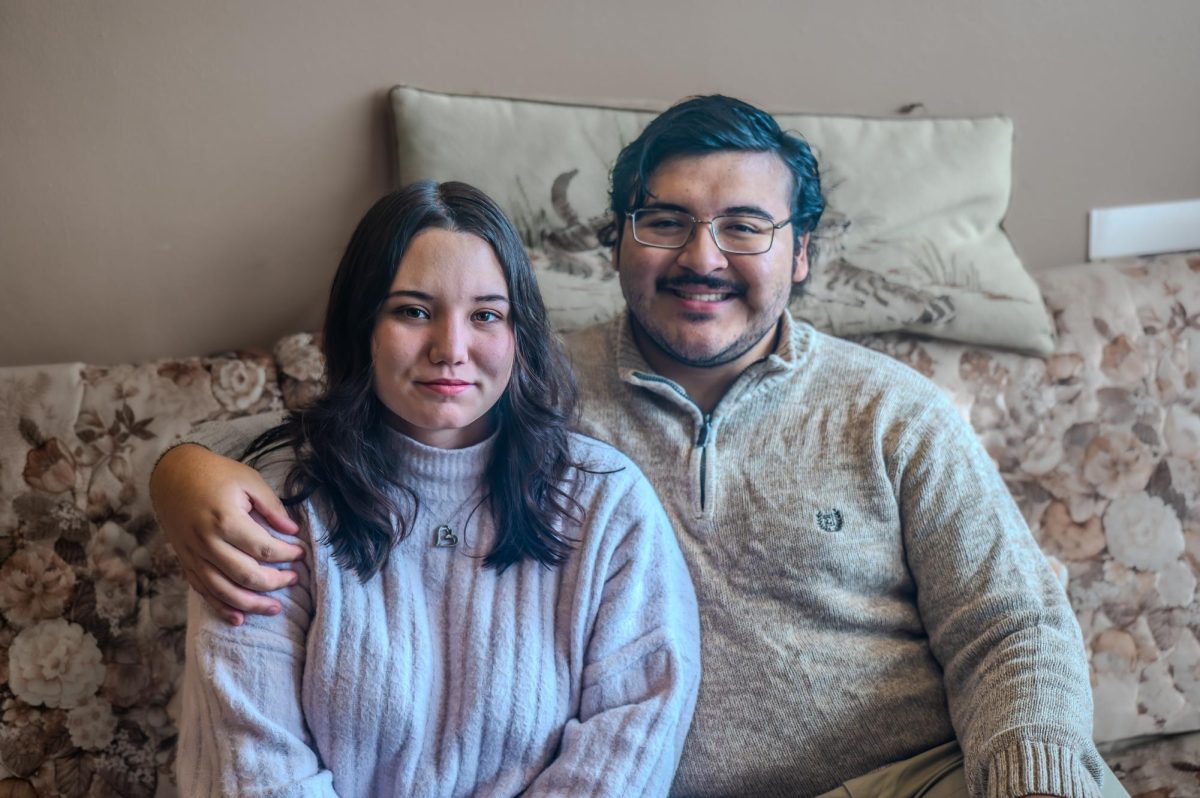By Andrea Baumgartel
baumgart1@grinnell.edu
In “Background Noyce,” a staff writer investigates research, projects or otherwise interesting happenings in Noyce Science Center. This week, the S&B’s Andrea Baumgartel ’19 sat down with Professor Damian Kelty-Stephen, Psychology, to discuss motor coordination, nested systems and what humans have in common with honey bees.
The one word that best describes Kelty-Stephen’s research is “nesting.”
“I think [my research] goes up and down the psychological rungs. It can go down to neuro, up to cognition, up to social interaction and even group behaviors,” Kelty-Stephen said.
According to Kelty-Stephen, the root of understanding our motor reactions in relation to any particular stimulus lies in the way we move on our way to experience said stimulus. These movements have all sorts of seemingly random, but very much “nested” levels of organization – a patterned, invisible, netted grid that binds together perception, action and cognition. And these fluctuations and the movements themselves can often be predicted, which is what Kelty-Stephen investigates.
“I do a lot of time-series analyses of how stuff moves, what sort of statistical structure there is in that movement, and then use that to predict what organisms will do in that movement,” Kelty-Stephen said.

Honeybees are an unlikely but useful model organism, according to Kelty-Stephen.
“We all appreciate that we’re part of a social network. We all act to conform, but we also act on our own,” Kelty-Stephen said. “Honeybees are similar: there’s a respect for roles in the community, but there’s also a lot of autonomy.”
This past summer, Kelty-Stephen and Nicole Carver ’19 researched the colonization habits of honeybees and found that they exhibit a complex network of microfractal organization when it comes to how, when and where they share information.
When it is time for a honeybee colony to build a new hive, scout bees go out to find and propose new locations.
“There’s no peer pressure … they don’t need a majority, but a quorum vote.” Kelty-Stephen explained. “So as soon as you have 10, 20 bees all liking the same place, the entire colony just goes there. … There is a communication across organizational scales where you can think of individual bees as the finest scale and the colony as the coarsest scale. In between there are clubs and cliques of bees engaging in their own roles, but often times we don’t think about how we take in information from one level of organization to another.”
Kelty-Stephen and Carver examined a group of bees that had been tagged with RIFD tags, which are like P-cards for bees, that signaled every time a bee passed the threshold to the hive and quantified their naturally occurring cycles of influence across different scales.
“We could test for underlying structures in individual bee time series of P card swipes.” Kelty-Stephen said.
Their time series data showed characterized, “cascadelike” movements of the bees, which were mathematically correlated with their interactions across time, spreading systematically through the environment.
“[It showed] real belongingness to one group of another in individual behavior dynamics. So that was fun,” Kelty-Stephen said.
“I saw it as a natural extension of my interest in motor coordination where you have a lot of different parts, each mostly doing its own thing. We think of the brain as controlling everything, but it’s actually too slow and not specific enough to be controlling everything. The brain leaves a lot of blanks for the rest of the body to fill in.” Kelty-Stephen said.



















































